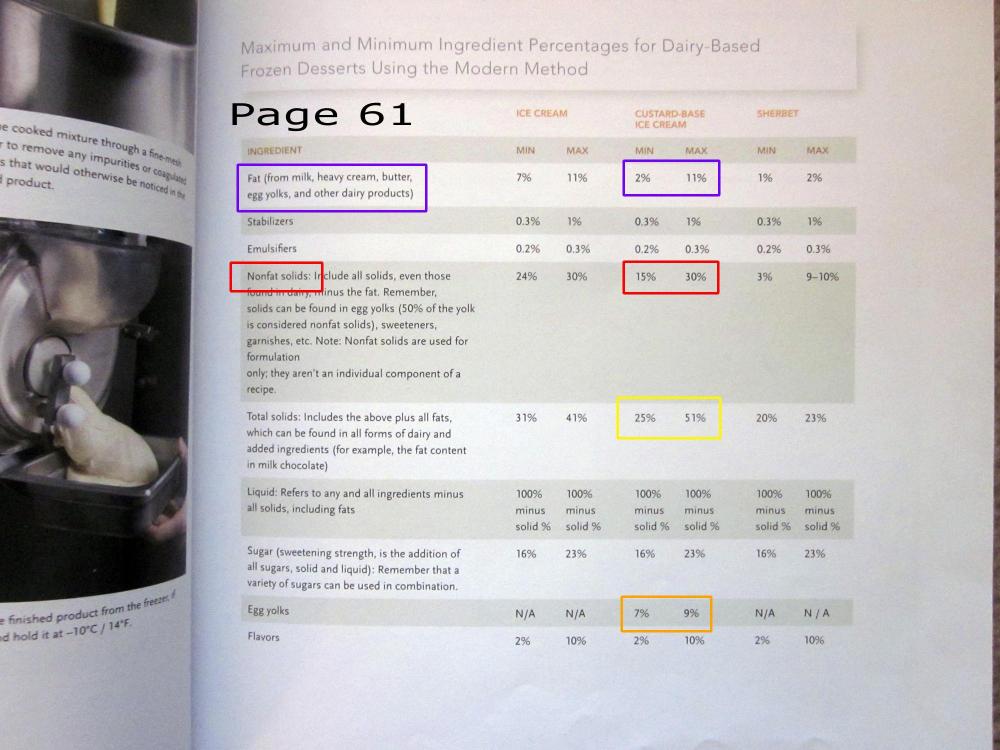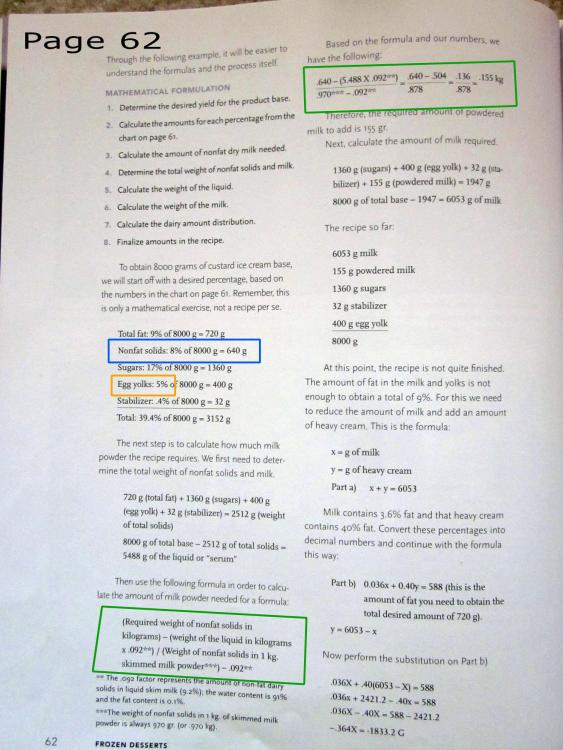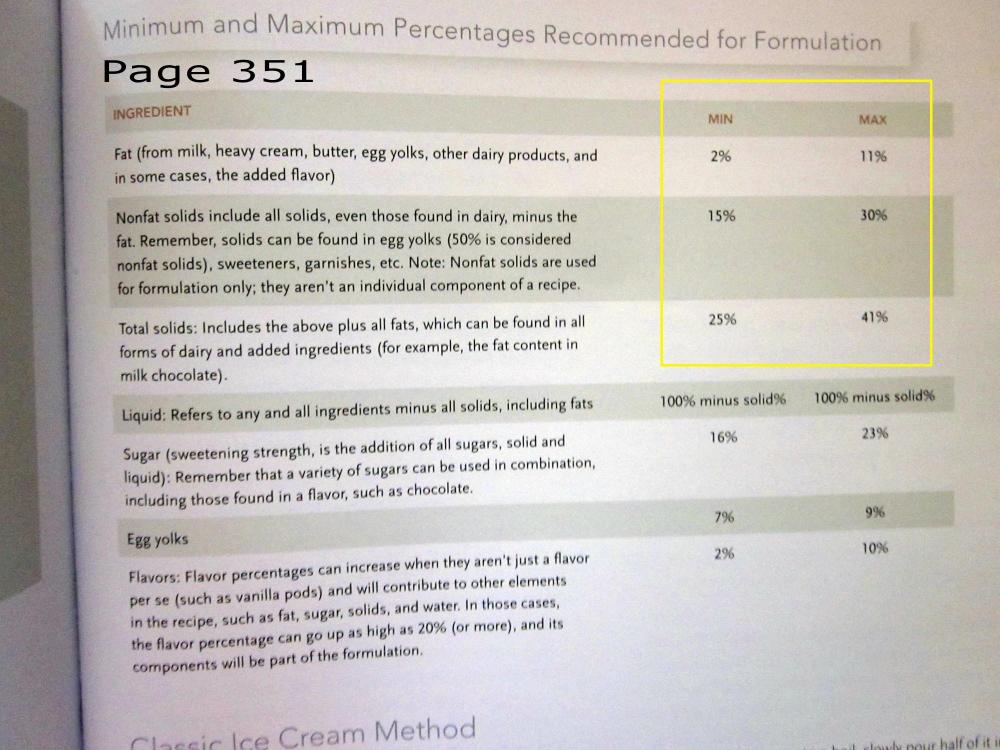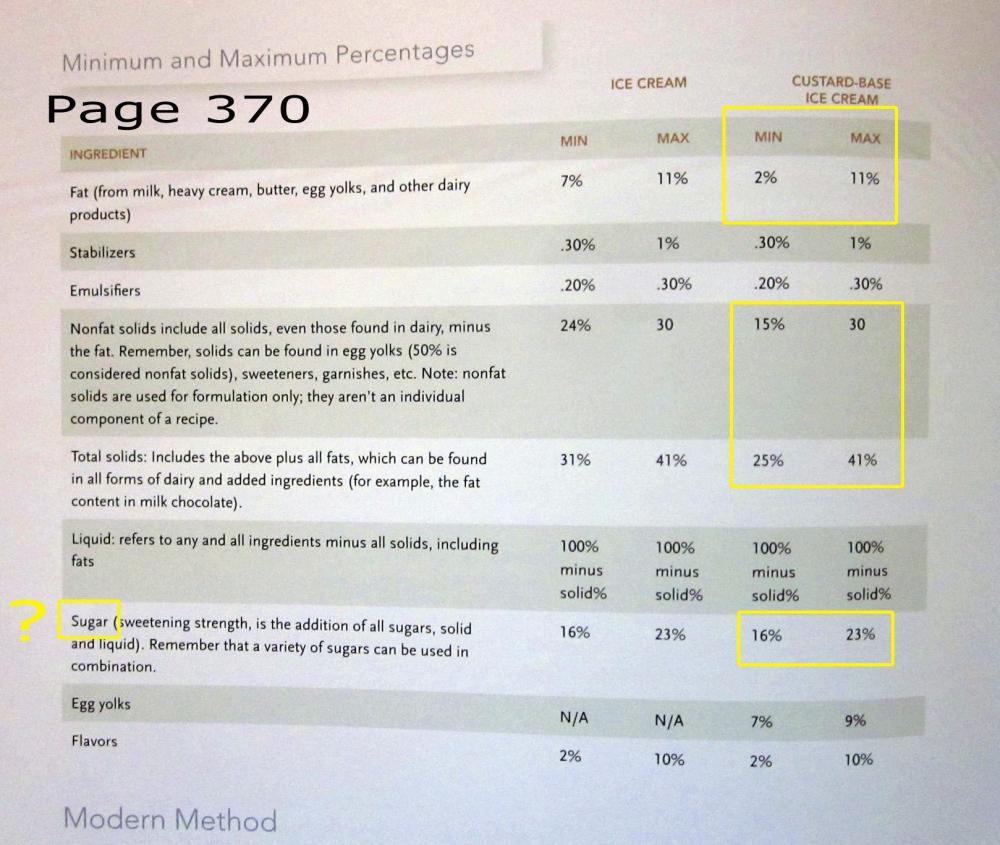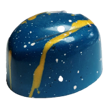Hi,
I’ve learned a ton about ice cream making on this forum and wanted to start off by saying thanks to everyone for sharing their considerable expertise!
I am hoping someone might be able to shed some light on a few questions…
I recently purchased “Frozen Desserts” by Francisco Migoya, and while it seems to represent a wealth of information, I’m also a bit perplexed by some of the formulations. I’ve noticed quite a few typographical errors in the rest of the book, and when the math doesn’t work out, I am not sure if I just don’t get it or if it’s a mistake…
I’ve uploaded images of a few of the pages where things are bit confusing. I’ve circled the issues in squares of various colors. Hopefully not too confusing.
Here goes...
1. It states on page 61 that for a custard-based vanilla recipe, the nonfat solid percentage should be between 15% - 30% (red square). However, on the next page (page 62) on the example, it seems to indicate that there should only be 8% nonfat solids (blue square). Shouldn’t it be between 15% and 30%, as it states on the previous page?
2. Still on page 62, it calculates the amount of milk powder which needs to be added. There is a formula (green square). I understand the math, I just don’t quite understand the “why”. Besides the unknown origin of the 8% figure of .640 kg, I am not sure why the denominator is used. Wouldn’t you just need to subtract the fat solids from the formulation from the required weight of nonfat solids (all in the numerator), which would leave you with what is needed to add? Not sure why you divide by the .878 constant…
3. Also on page 62, it lists yolks at 5% of total (orange square), yet the range on page 61 recommends between 7 and 9% (also orange square).
4. Another oddity is on page 351 and repeated on page 370 (yellow squares). The total solids don’t seem to add up. For instance, in the Max column, adding the fat solids (11%) plus the nonfat solids (30%) equals 41%. However, in the Min column, adding those figures (2% + 15%) does not equal 25%. Oddly, back on page 61, what seems to be the same calculation appears to be incorrect at 51% (yellow square).
Additionally, shouldn’t sugar be counted as a solid in the formulation? If so, that would bring both Min and Max totals well above what is on the chart… (also a yellow square)
A couple of other general questions… What exactly is “serum”? From what I gather, it’s the “non-water” liquid(s) (ie, milk, cream), and would include both the solids and non-solids in that “non-water” liquid. Is this correct?
On page 61, it says the total fat includes fat from milk, cream, etc, but also includes fat from yolks (purple square). Wouldn’t the relevant fat only be butterfat? It’s my understanding that the fat in yolks is not butterfat and doesn’t have the same effect on the final product as the fat from cream, etc…
On the same line, it recommends a range of fat percentage between 2 and 11% for custard-based ice creams (also a purple square). I don’t think this is a typo because elsewhere in the book, it states that most of the recipes are formulated with low percentages of fat, about 6%. Does that seem a little low?
OK, I will stop asking anymore questions, as I have run out of distinct colors to use. ![]()
FWIW, I only tried one recipe from the book, the Vanilla, and was quite disappointed. It was grainy, icy, and tasted more like ice milk. You can just look at it and see it’s going to be pretty low in butterfat with so little cream… Here is the recipe from the book, scaled down in Excel:
Whole milk: 31.56 oz
Heavy cream: 5.58 oz
Sugar: 7.50 oz
Egg yolks: 3.35 oz (6 yolks)
1/8 teaspoon of salt
2 tsp of vanilla
I really like the idea behind this book but I have not been able to figure out what is going on with some of those numbers! I have just received “Ice Cream” (Hoff and Hartel) and am looking forward to diving in.
I've had great success with many of the ideas I've found on this forum, including the famous "Ruben Method"! I'm lucky: my lowest burner seems to be automatically set right at 162 degrees! ![]()
Any thoughts would be much appreciated!
Thanks!

